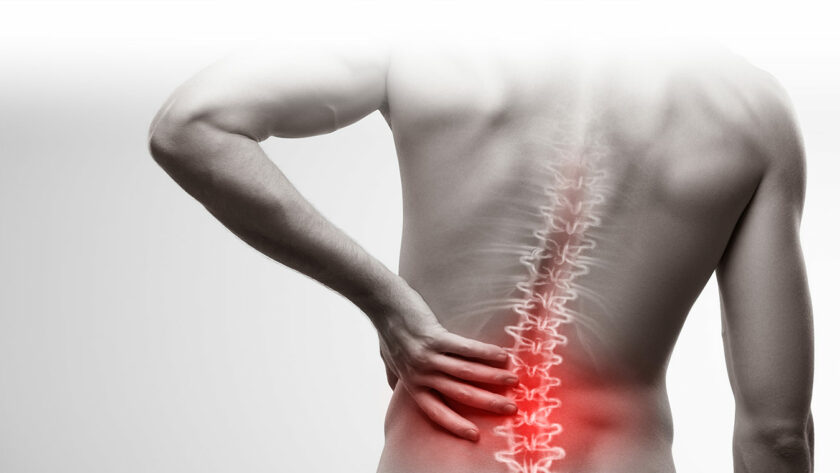Waking up with body stiffness can put a damper on your day before it even begins. Many individuals experience morning stiffness, a common condition that can affect people of all ages.
While it is typically harmless, morning body stiffness can be uncomfortable and hinder your daily activities. Understanding the reasons behind this stiffness is crucial to finding effective solutions.
In this article, we will explore the causes of morning body stiffness and delve into 5 natural approaches to alleviate it—
Causes of Morning Body Stiffness
Morning body stiffness can be attributed to various factors, including:
- Lack of physical activity: Sedentary lifestyles contribute to muscle stiffness and reduced flexibility. Spending extended periods without movement, such as during sleep, can cause muscles to become tight and stiff.
- Age-related changes: As we age, our joints and connective tissues undergo natural wear and tear. This can lead to reduced flexibility and increased stiffness, particularly in the morning.
- Poor sleep posture: Sleeping in positions that strain or misalign the spine and joints can result in morning stiffness. Improper support for the neck, shoulders, and lower back can exacerbate the problem.
- Inflammation and arthritis: Inflammatory conditions like arthritis can cause morning stiffness. Rheumatoid arthritis, osteoarthritis, and other forms of joint inflammation often manifest with stiffness and pain upon waking.
- Dehydration: Insufficient hydration can lead to muscle cramps and stiffness. Lack of fluids impairs the body’s ability to properly lubricate joints and maintain flexibility.
Natural Way to Eradicate Morning Body Stiffness:
Here are four additional natural ways to help eradicate morning body stiffness:
- Regular Exercise and Stretching:
Engaging in regular physical activity and incorporating stretching exercises into your daily routine can significantly reduce morning body stiffness. Exercise helps increase blood flow, warms up muscles, and promotes flexibility.Consider activities such as walking, jogging, yoga, or tai chi. These low-impact exercises can improve joint mobility and relieve stiffness over time. Additionally, targeted stretching exercises that focus on specific areas of tightness, such as the neck, shoulders, and lower back, can provide relief and prevent future stiffness. - Heat Therapy:
Applying heat to stiff areas can help relax muscles, increase circulation, and alleviate morning stiffness. You can use various heat therapy methods, including:- Hot Shower or Bath: Start your day with a warm shower or soak in a bath. The heat will help relax tight muscles and improve joint mobility.
- Heating Pads or Warm Compresses: Apply a heating pad or a warm compress to the affected areas for around 15-20 minutes. Repeat as needed to reduce stiffness and promote relaxation.
- Warm-Up Exercises: Before engaging in any physical activity, perform warm-up exercises that involve gentle movements and the application of heat to the muscles. This helps increase blood flow and prepare the body for more intense movements, reducing the chances of stiffness.
- Adequate Hydration:
Staying hydrated is essential for maintaining healthy muscles and joints. Dehydration can exacerbate muscle cramps and stiffness. Ensure you drink enough water throughout the day to keep your body well-hydrated.A general guideline is to aim for at least eight 8-ounce glasses of water per day. However, individual hydration needs may vary based on factors like activity level and climate. By maintaining proper hydration, you can support joint lubrication, reduce muscle tension, and prevent morning stiffness. - Massage and Self-Myofascial Release:
Massage therapy and self-myofascial release techniques can help relieve morning body stiffness by targeting tight muscles and promoting relaxation.Consider the following approaches:- Professional Massage: Schedule regular sessions with a licensed massage therapist who can target areas of stiffness and use techniques like Swedish massage, deep tissue massage, or trigger point therapy to release tension and improve flexibility.
- Foam Rolling: Foam rollers are affordable and widely available tools that can help release muscle tension and improve mobility. Roll the foam roller along tight muscles, applying gentle pressure to break up knots and adhesions. Focus on areas such as the back, thighs, and calves.
- Tennis Ball Therapy: Use a tennis ball or a massage ball to target specific areas of stiffness. Place the ball on the floor or against a wall and lean into it, applying pressure to tight spots. Roll the ball around to release tension and promote relaxation.
- Red Light Therapy:
Also known as low-level light therapy or photobiomodulation, this non-invasive treatment utilizes specific wavelengths of light to stimulate healing and reduce inflammation in the body.
Benefits of Red Light Therapy for Morning Body Stiffness:
- Reduces inflammation:
Red light therapy has been shown to reduce inflammation in various tissues, including muscles and joints. By targeting the affected areas with specific wavelengths of light, it promotes cellular regeneration and helps alleviate stiffness caused by inflammation. - Enhances blood circulation:
Red light therapy improves blood flow by stimulating the production of nitric oxide, a compound that dilates blood vessels. Increased circulation ensures that oxygen and essential nutrients reach the muscles and joints, aiding in their recovery and reducing stiffness. - Stimulates collagen production:
Collagen is a protein that provides structure and elasticity to the body’s connective tissues. Red light therapy encourages the production of collagen, aiding in the repair of damaged tissues and promoting flexibility. - Relaxes muscles:
Red light therapy helps relax muscle fibers, relieving tension and stiffness. By stimulating the release of endorphins, it also provides natural pain relief, allowing for improved mobility and reduced discomfort. - Supports sleep quality:
Sleep is crucial for muscle recovery and overall well-being. Red light therapy has been shown to regulate circadian rhythms and promote better sleep quality. By ensuring a restful night’s sleep, it can reduce morning stiffness associated with poor sleep posture.
Incorporating Red Light Therapy into Your Routine
To incorporate red light therapy into your morning routine, you can consider the following steps:
Choose a high-quality device:
Look for a reputable red light therapy device that emits wavelengths in the range of 630 to 850 nanometers, as these are most effective for treating muscle and joint stiffness.
I highly recommend the Mito Red Light Mobile Flex. I use this device personally and love the portability and multiple light functions.

Click Here To Learn More About Mito Red Light Mobile Flex and other devices.
- Follow recommended guidelines: Adhere to the instructions provided by the manufacturer for optimal usage. Typically, sessions last between 10 to 30 minutes, depending on the intensity of the device.
- Positioning and exposure: Position the device near the affected areas, allowing the light to penetrate the skin. Maintain a safe distance as per the instructions provided.
- Consistency is key: Red light therapy is most effective when used consistently. Consider incorporating it into your morning routine or whenever you experience stiffness to maximize the benefits.
Morning body stiffness can hinder your daily activities and affect your overall well-being. While several factors contribute to this condition, incorporating natural approaches such as red light therapy can provide relief and improve flexibility.
Red light therapy offers numerous benefits, including reduced inflammation, enhanced blood circulation, collagen production, muscle relaxation, and improved sleep quality. By understanding the causes of morning body stiffness and adopting natural remedies like red light therapy, you can eradicate stiffness and start your day with vitality and comfort.





